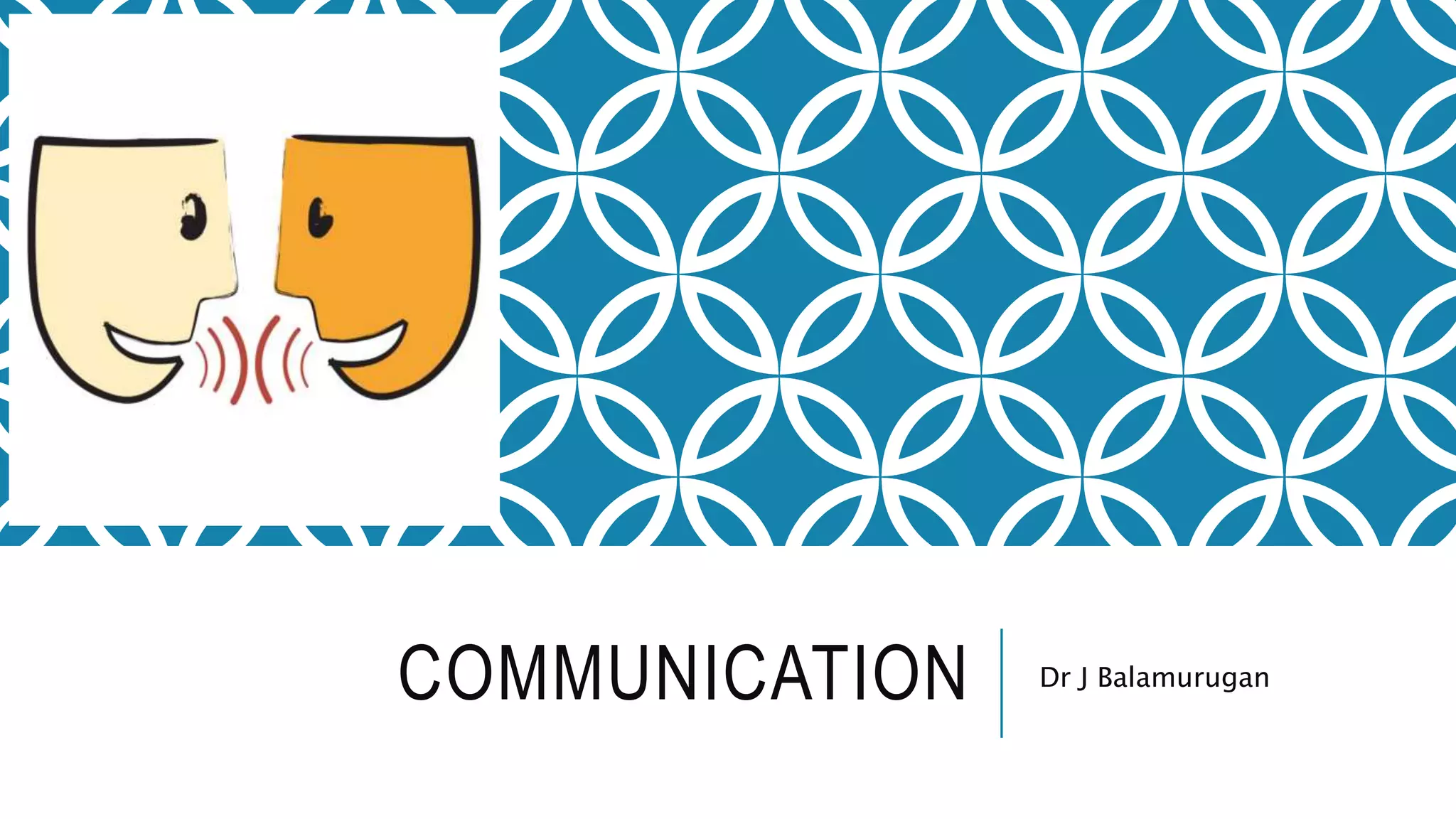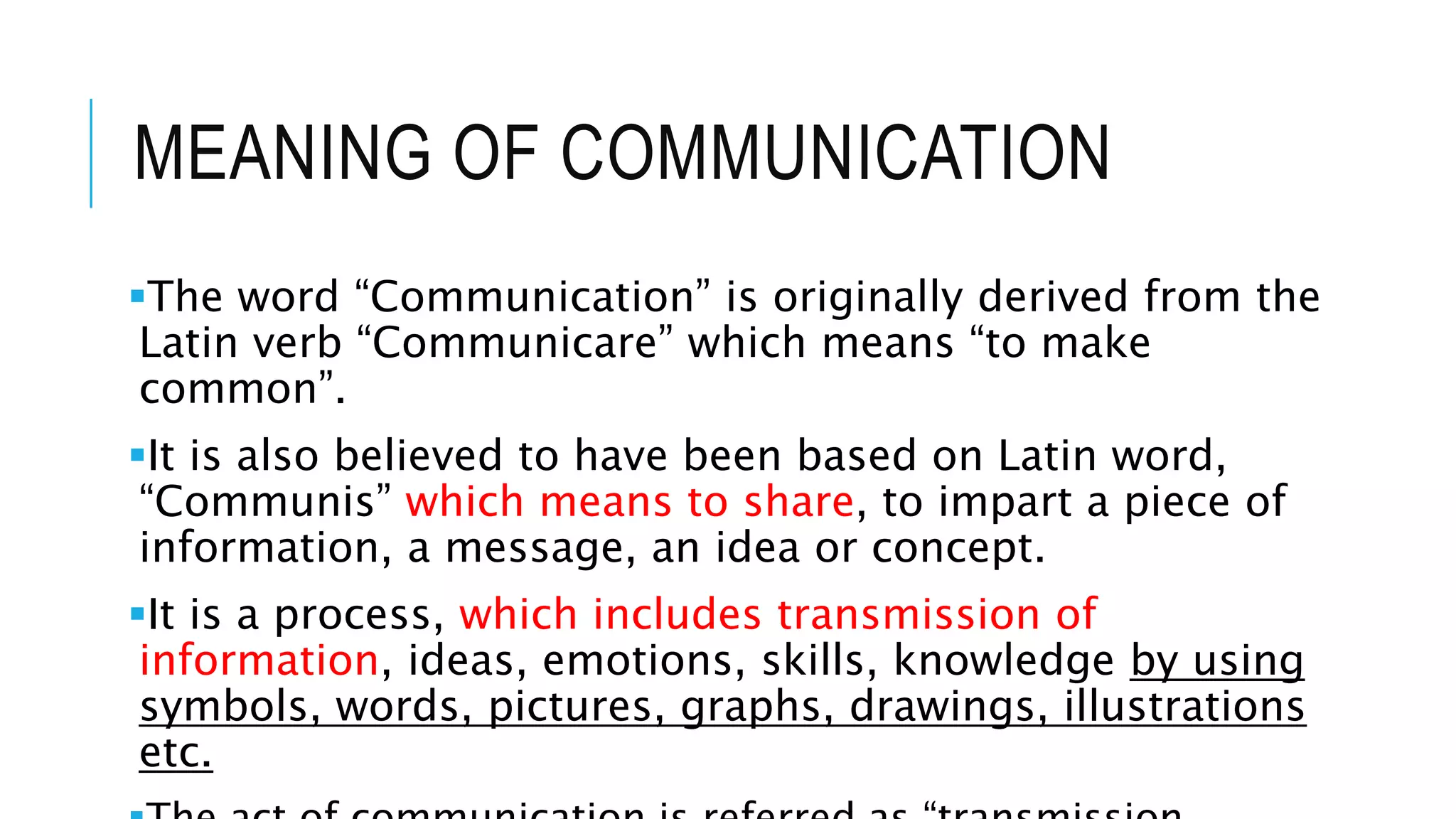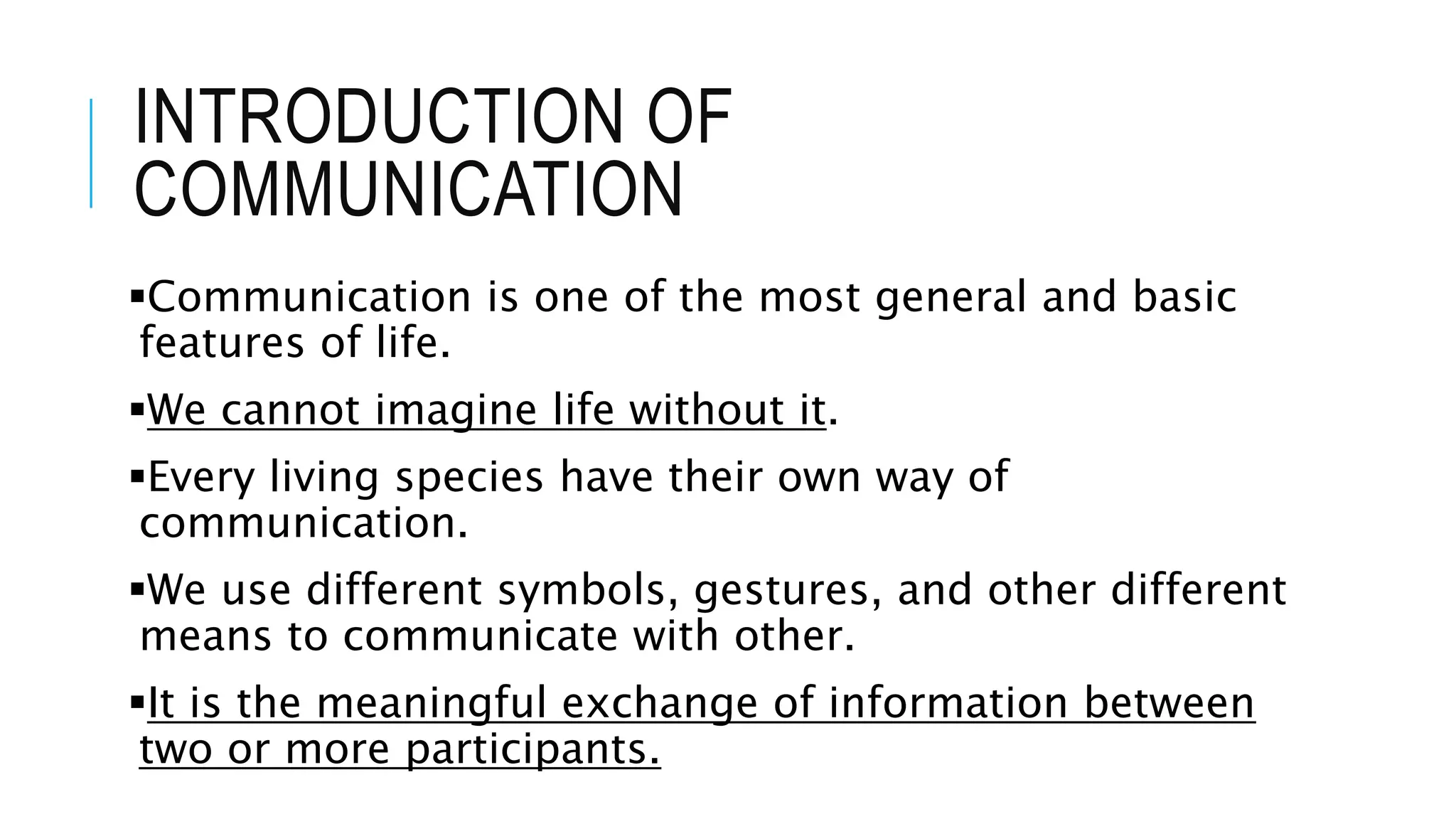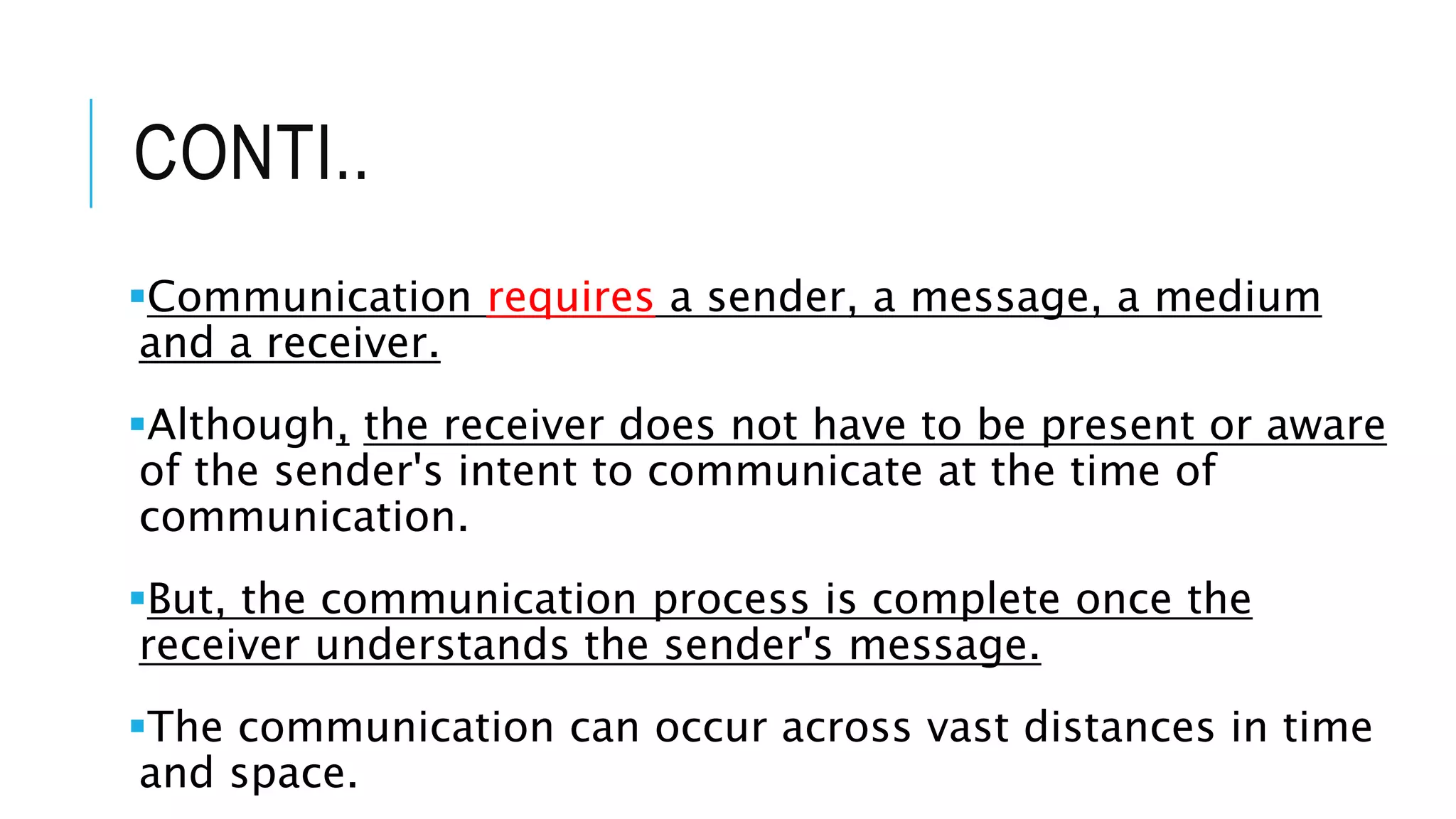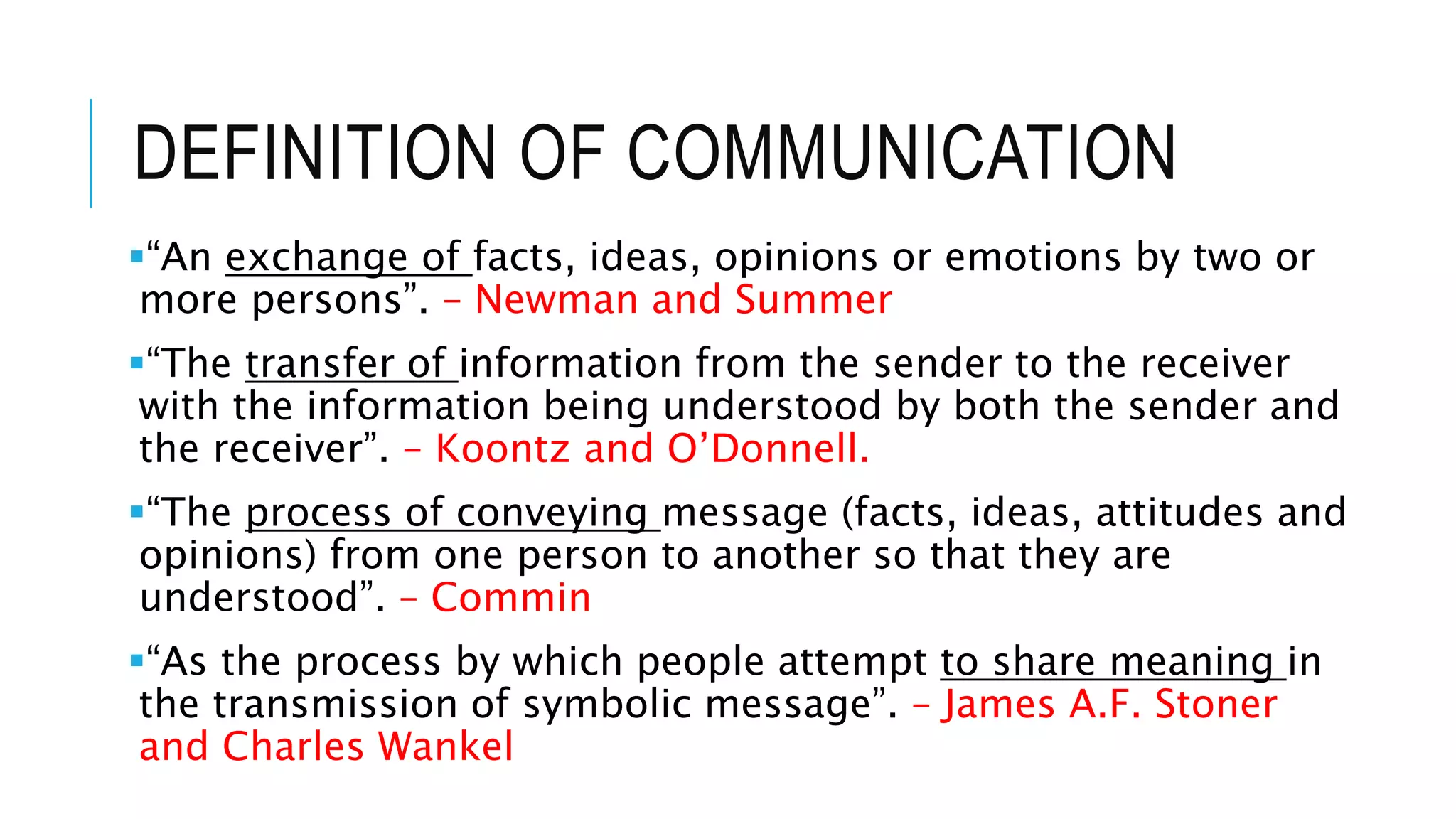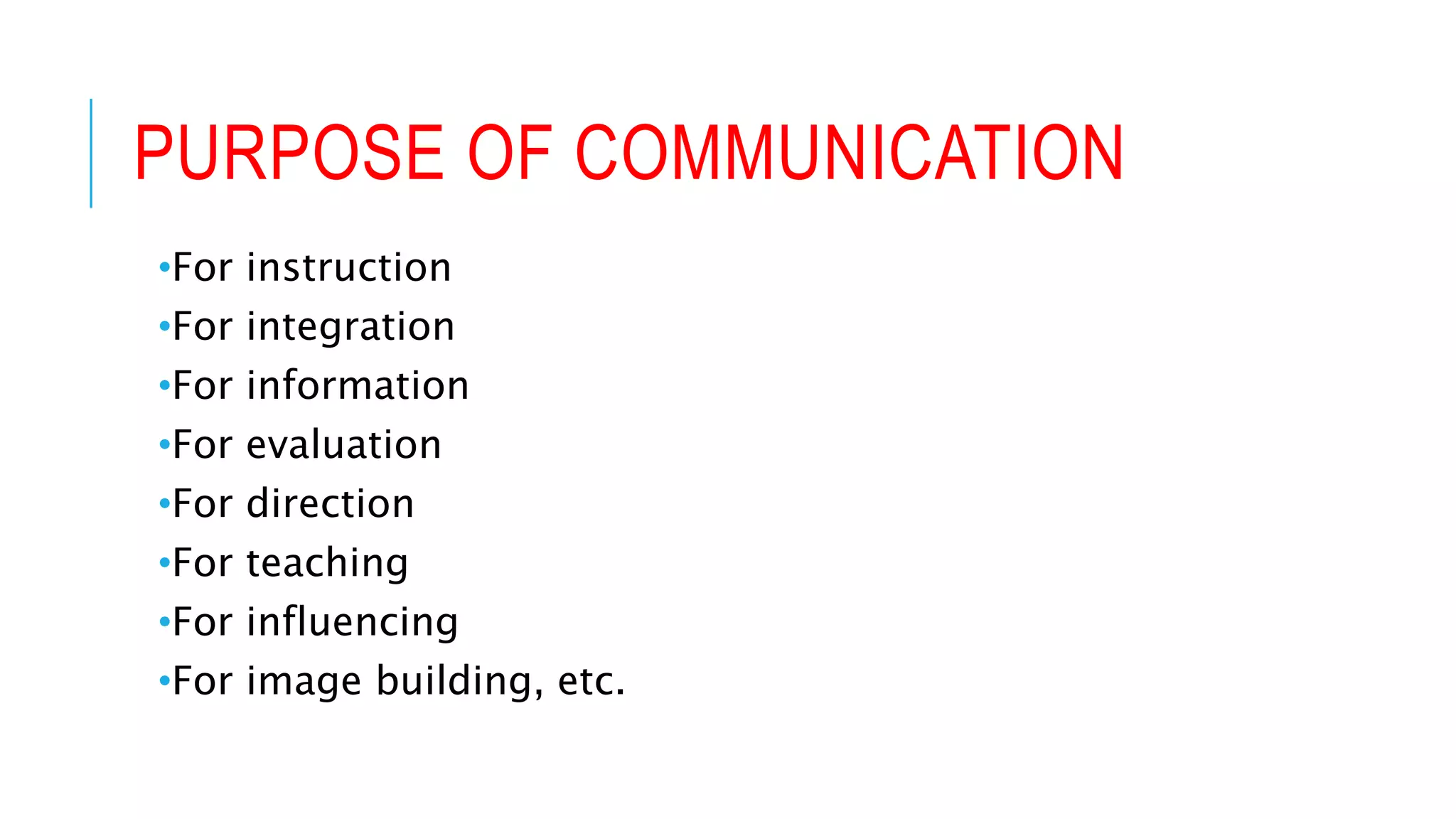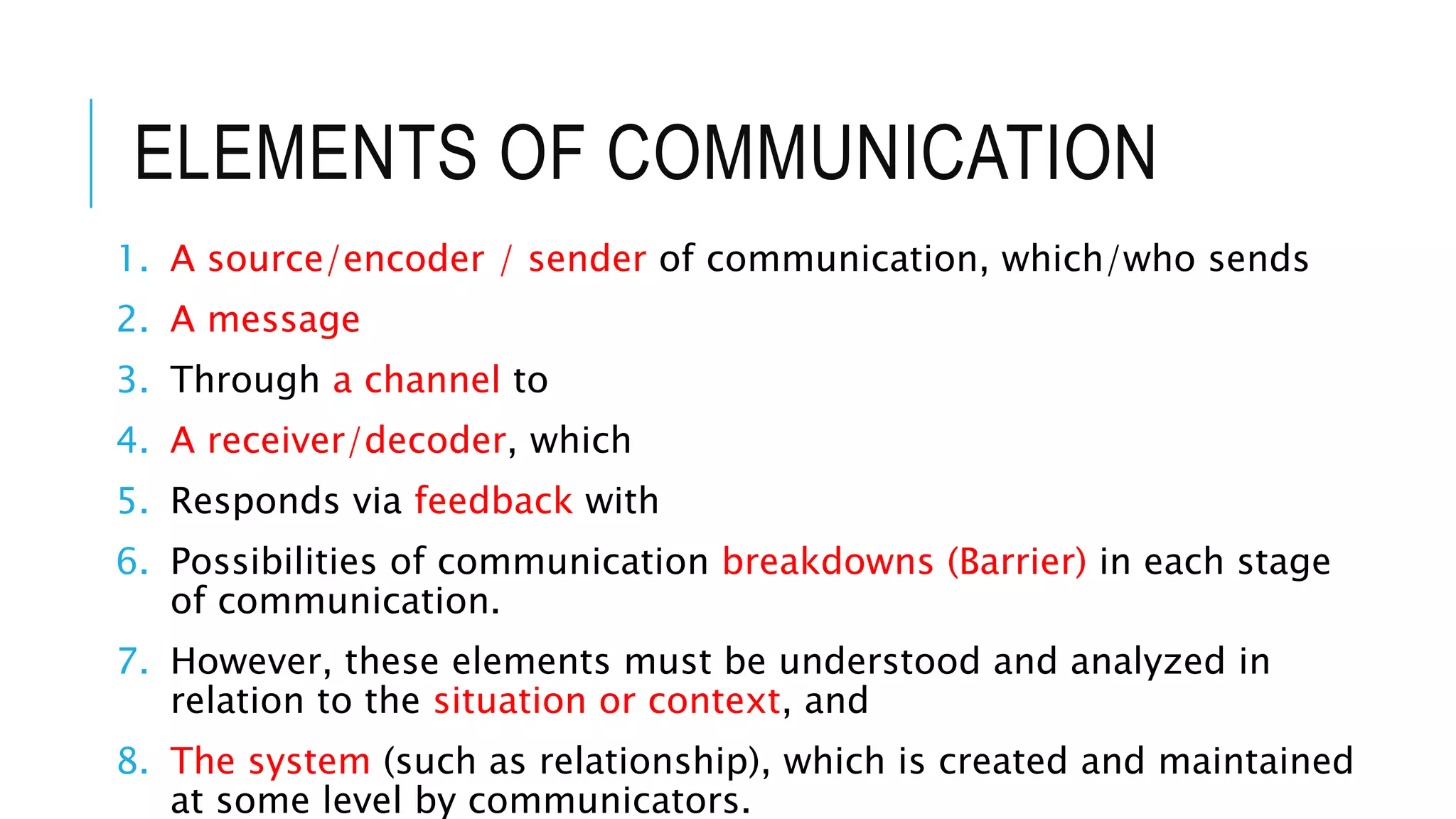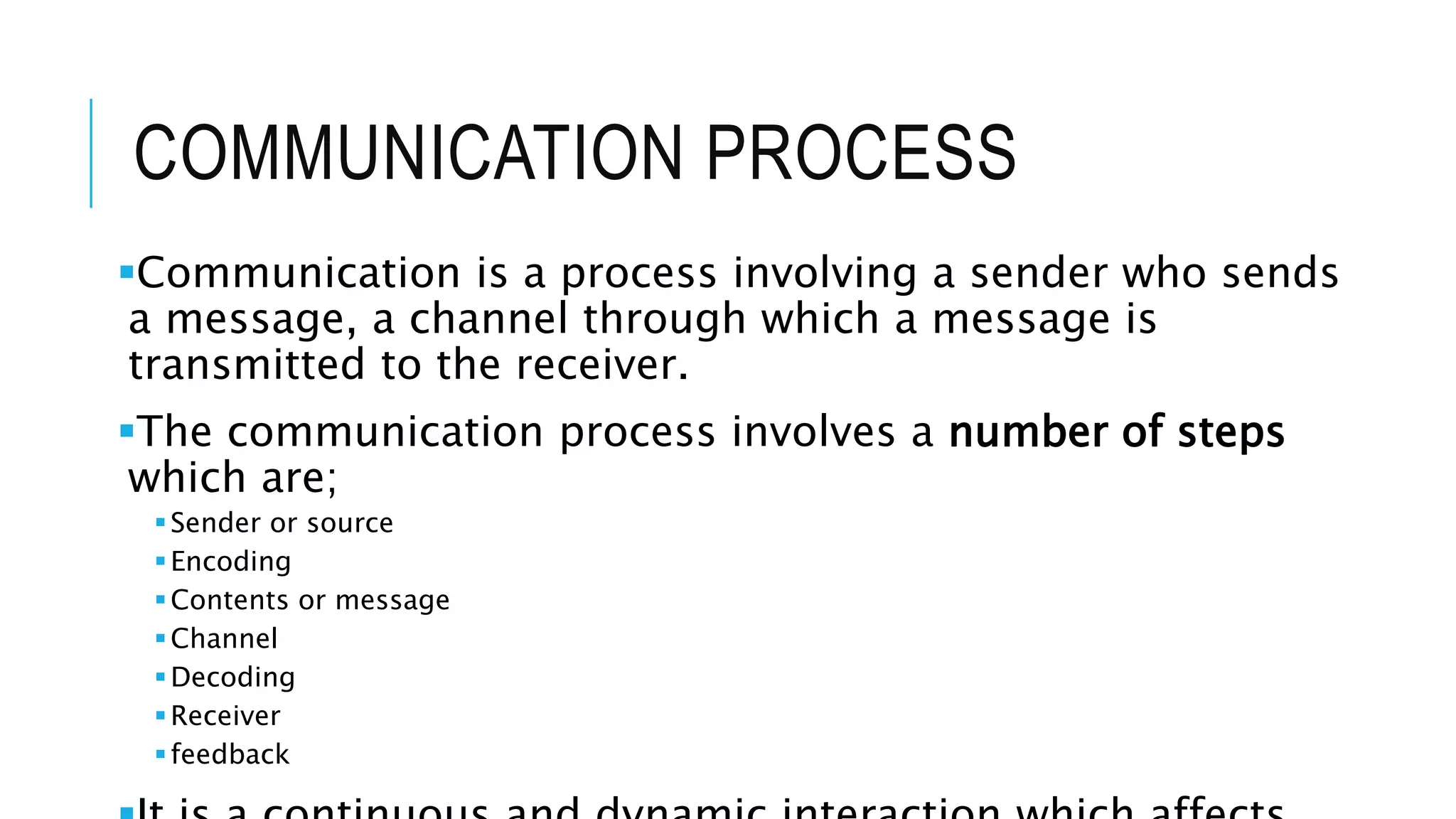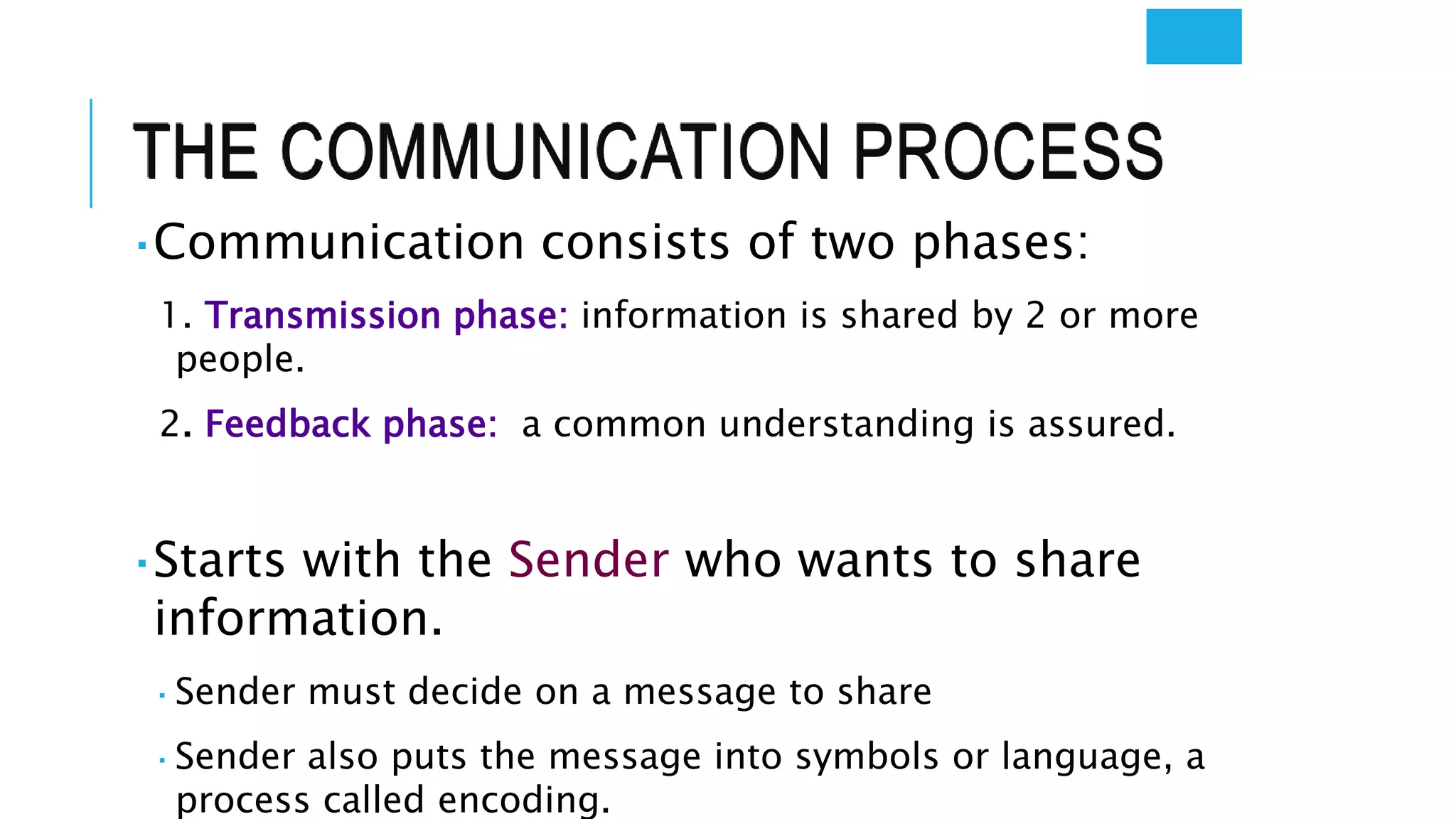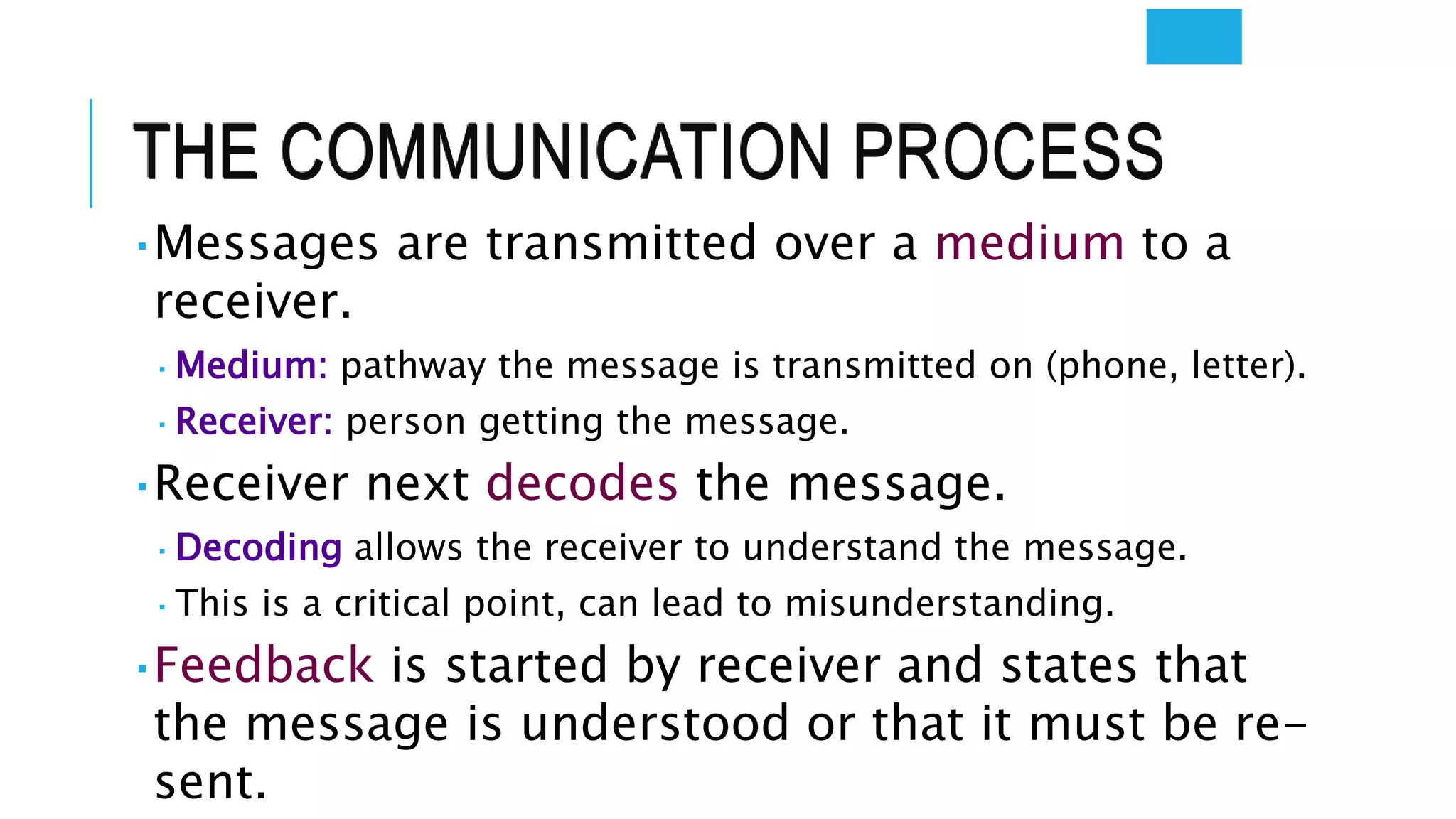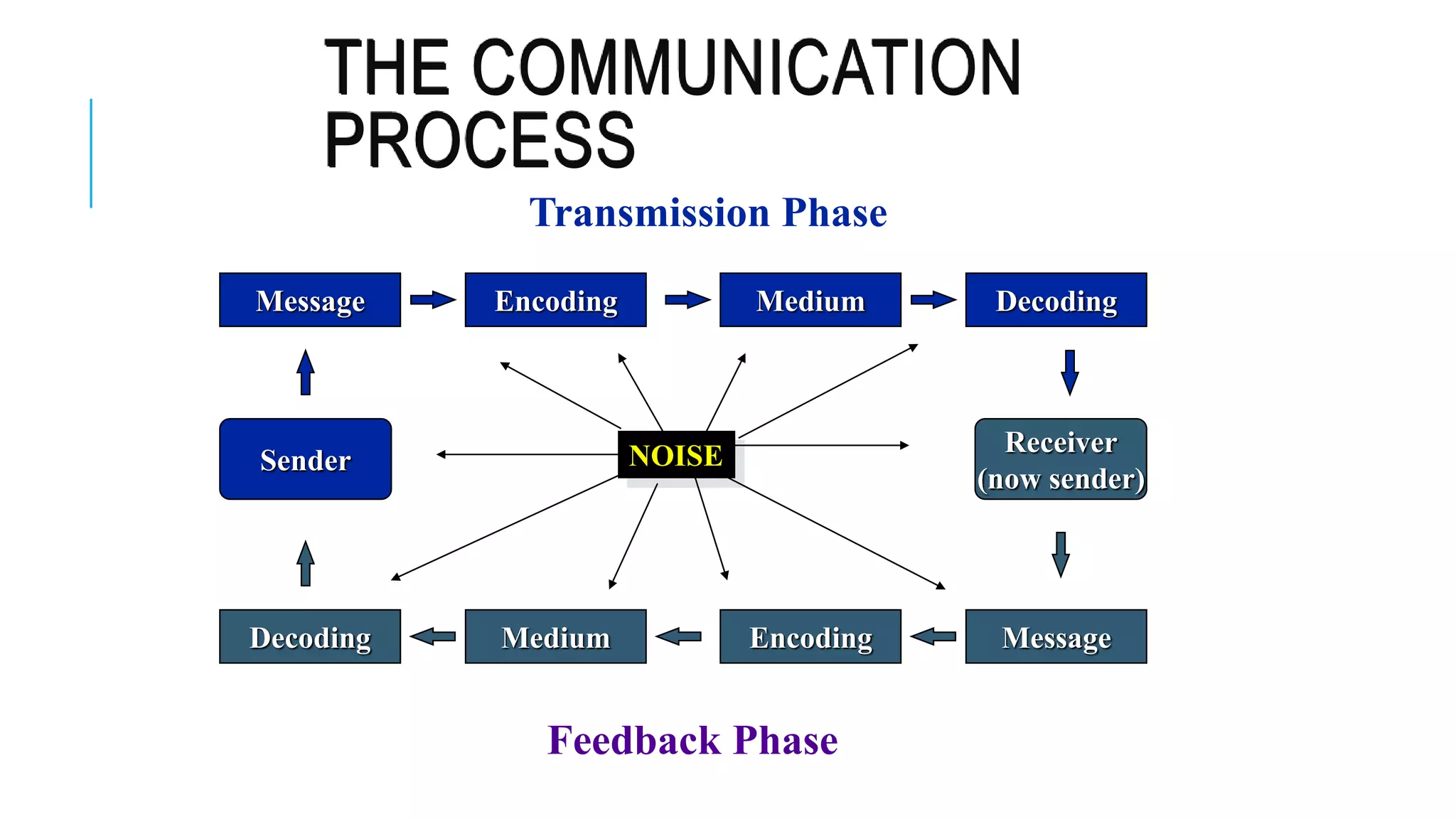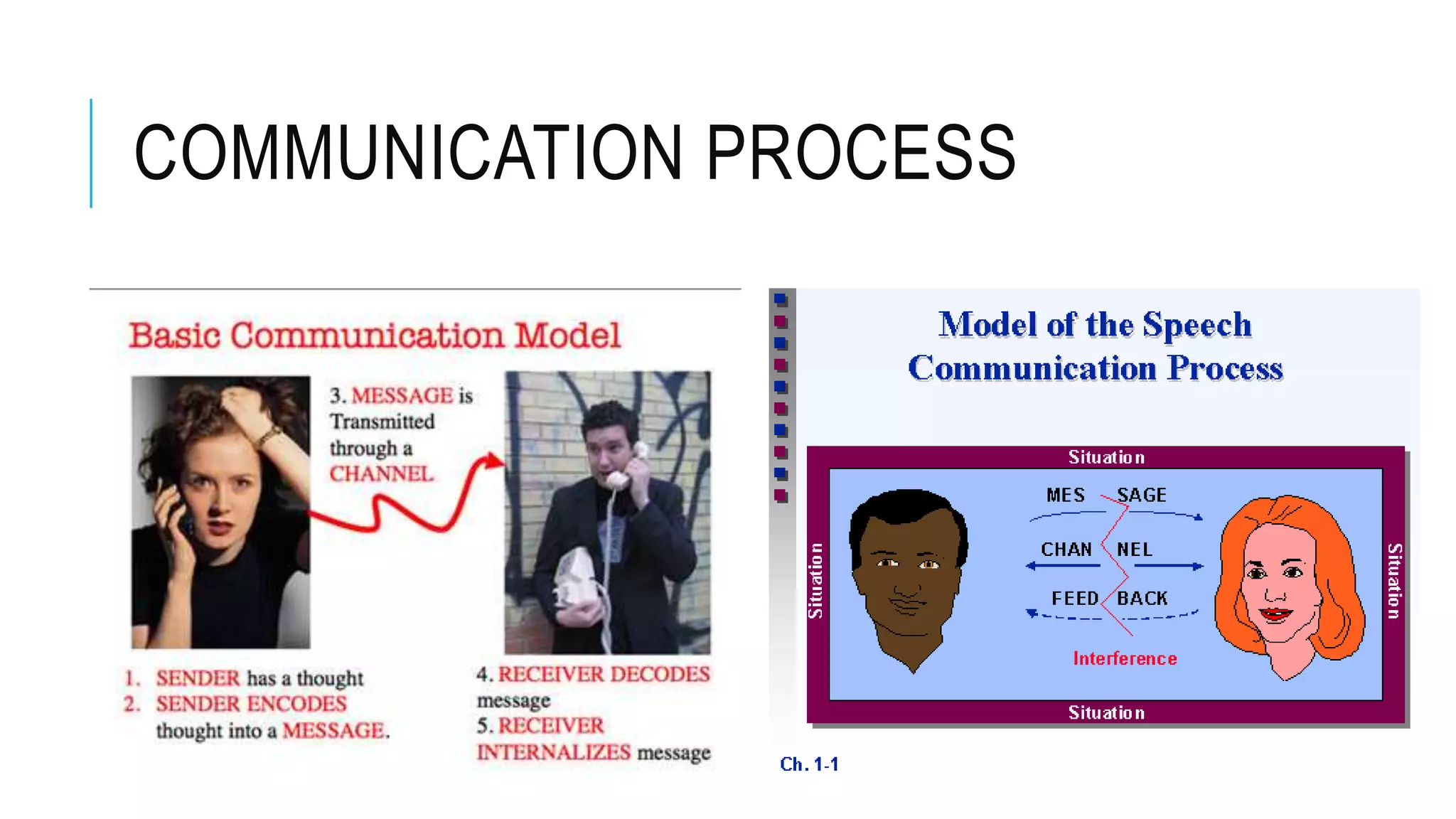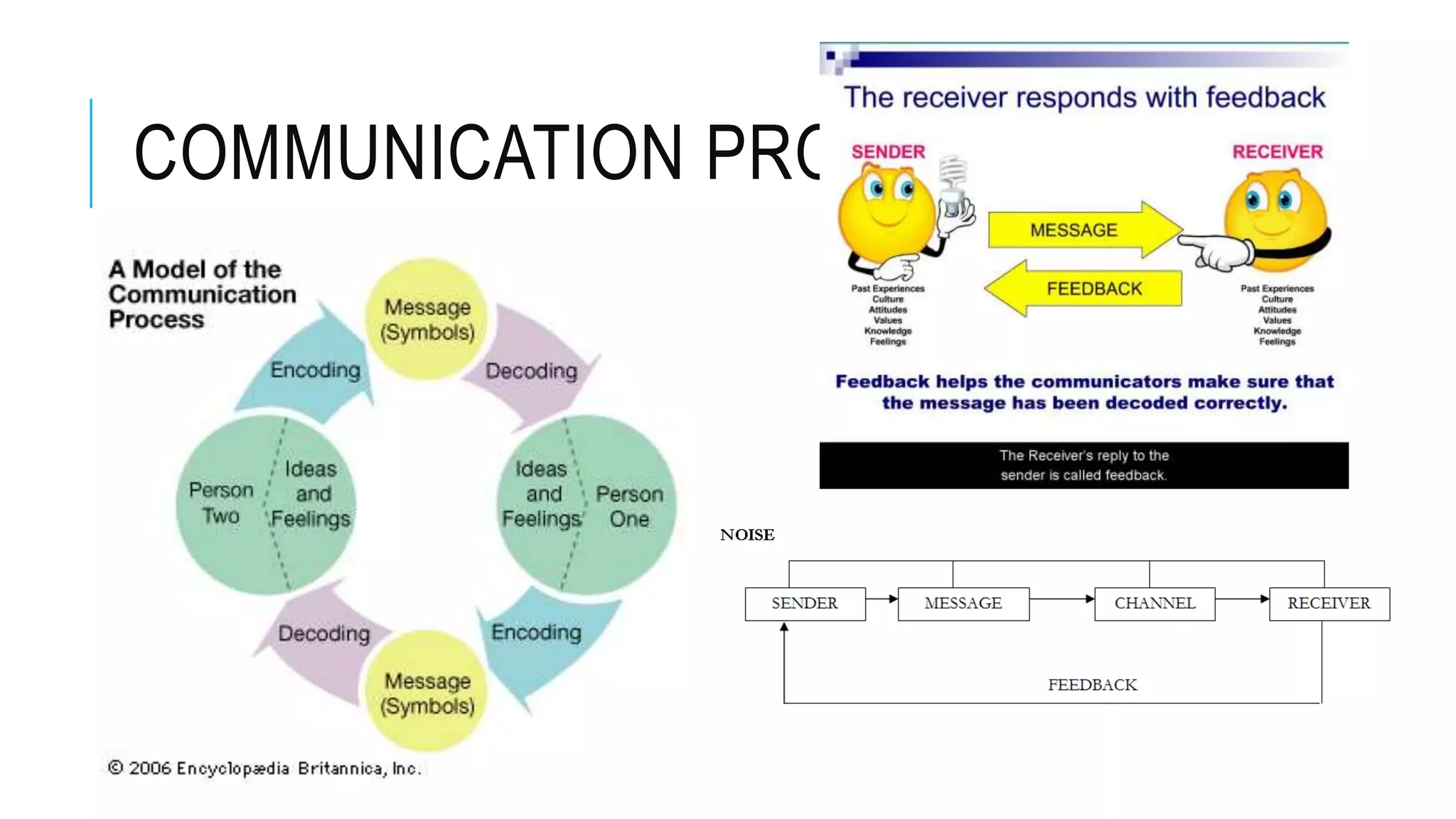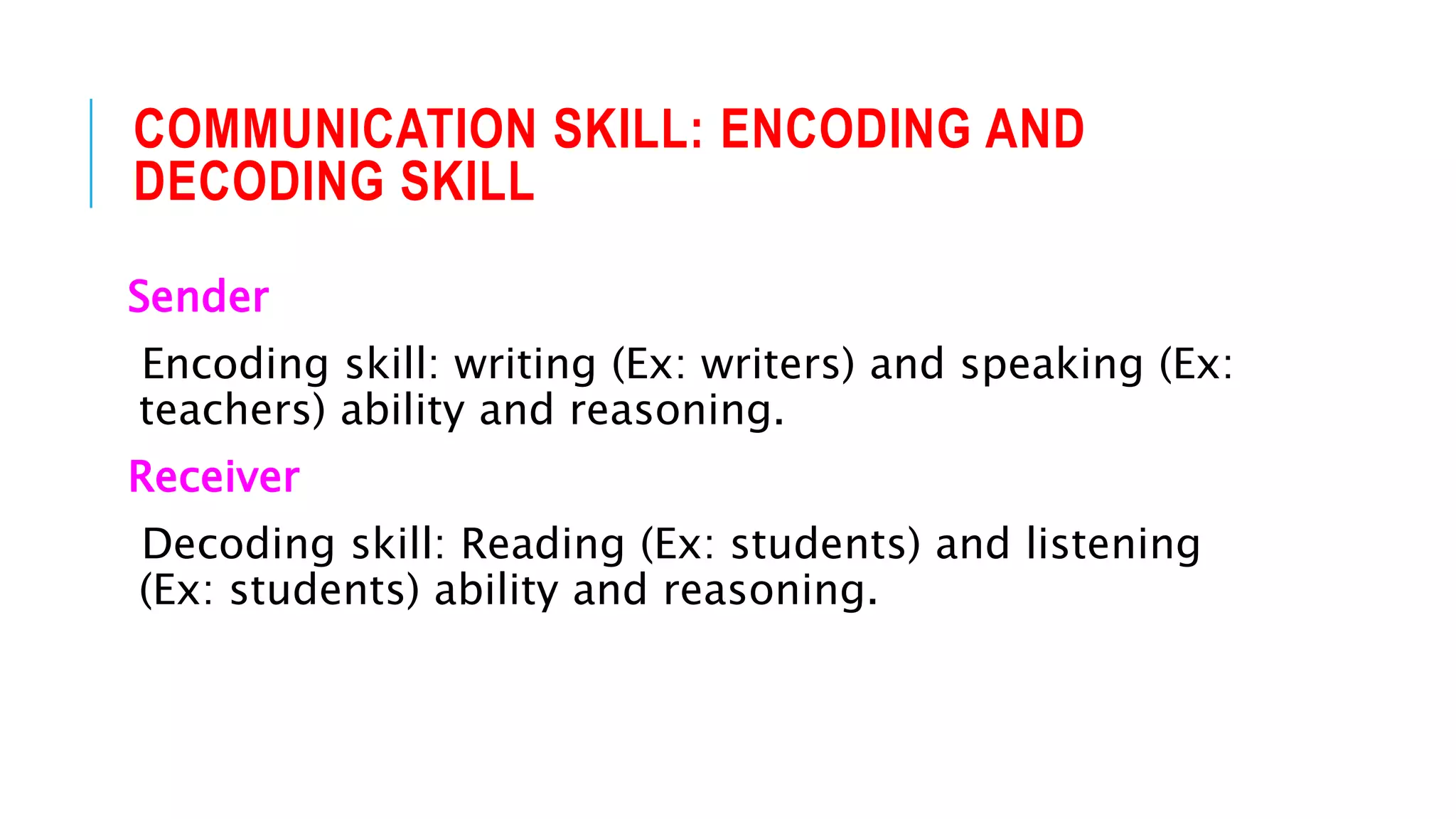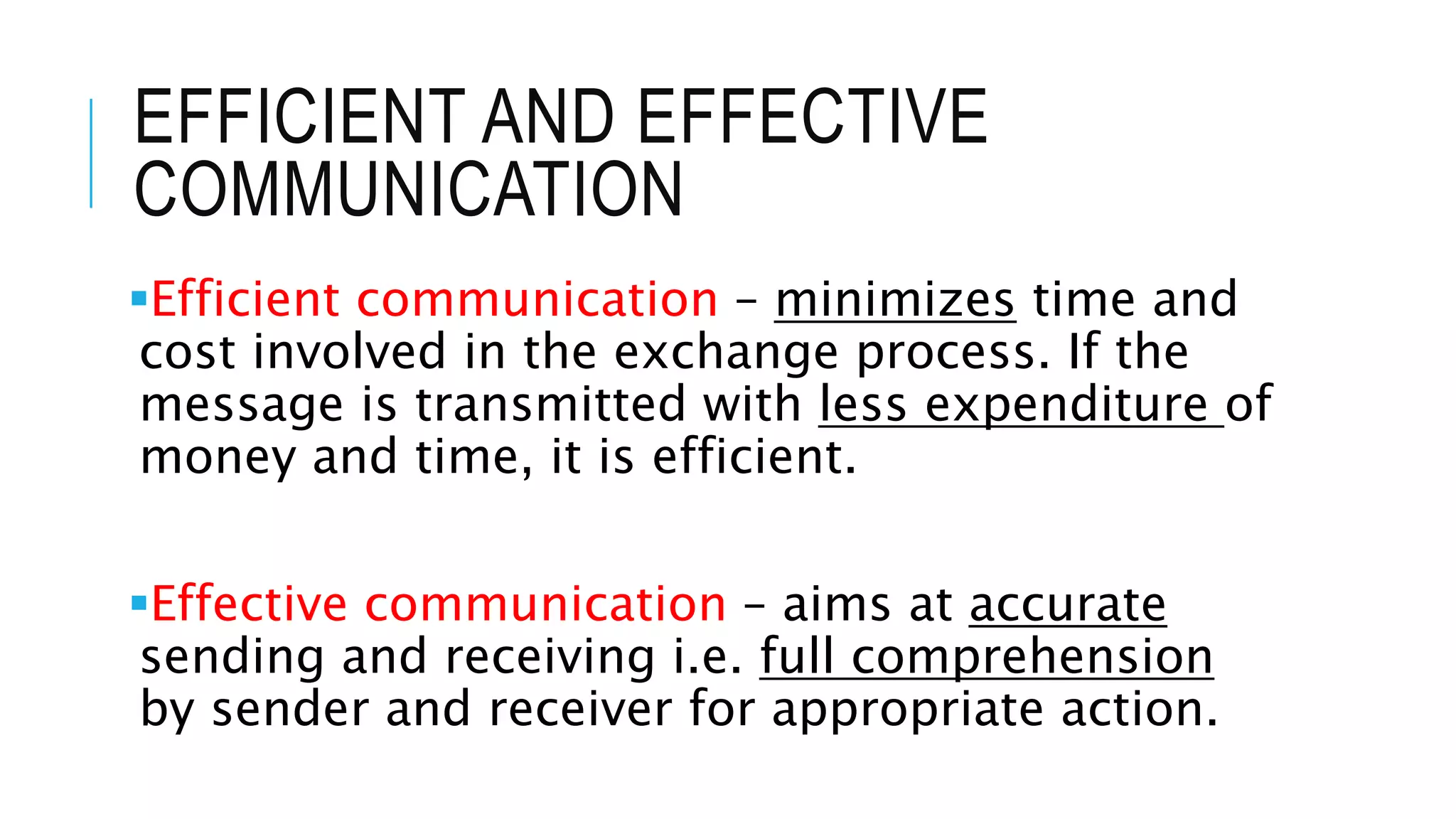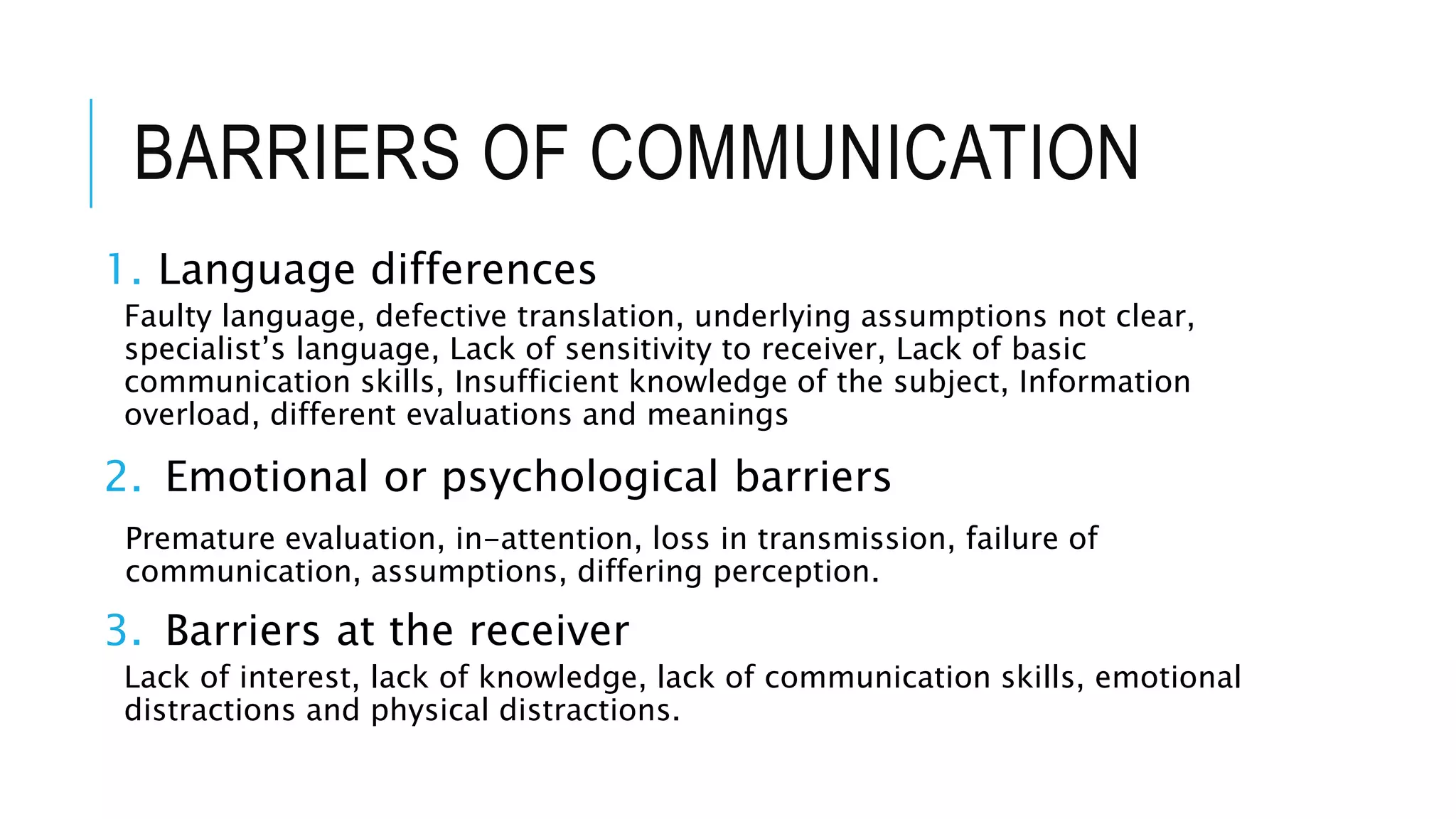This document discusses communication. It defines communication as the transfer of information from a sender to a receiver so that the message is understood. It notes that communication is a process that requires a sender, message, medium, and receiver. The document outlines the key elements and process of communication, including encoding a message, transmitting it through a channel, decoding it, and providing feedback. It also discusses characteristics of communication like it being a process involving transmission and understanding, and purposes of communication like providing information or influencing others. Barriers to effective communication are also mentioned.
